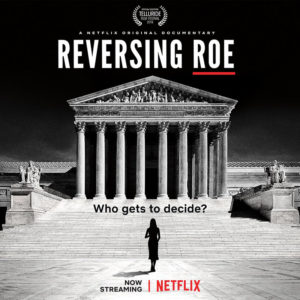Film Review: Reversing Roe

During the trials and tribulations of the Brett Kavanaugh Supreme Court nomination process, after which he was confirmed and sworn in as the newest justice despite multiple allegations of sexual abuse and misconduct dating back to the 1980s, Netflix debuted its original documentary Reversing Roe. The film looks at the decades-long effort to overturn Roe v. Wade, one of the most divisive sociocultural and sociopolitical issues of modern history and one the highest court in the land could drastically change now that it has a conservative majority.
Directed and produced by Ricki Stern and Annie Sundberg, Reversing Roe examines the polarizing history of the pro-choice and pro-life movements in the United States after Roe v. Wade and Doe v. Bolton, the 1973 Supreme Court decisions that legalized abortion.
Before Roe and Doe, abortion was legal or decriminalized in a few states while most states criminalized or outlawed it. Horror stories of dangerous back-alley abortions abounded. After Roe and Doe, social conservatives, especially the rising religious right, began to organize against not only abortion, but also the ratification of the Equal Rights Amendment (ERA) in various states nationwide. The film also examines the religious right’s political impact in the 1980s with the election of Ronald Reagan, the rise of the Moral Majority, and fringe extremism in the 1990s in the form of violent abortion clinic bombings and horrific doctor assassinations.
When it comes to the legal aspects of the film’s subject, most experts can agree that the root of contemporary abortion laws and other reproductive health restrictions and regulations can be traced back to the 1992 Planned Parenthood v. Casey ruling were the moderate conservative justices, Sandra Day O’Connor, David Souter, and Anthony Kennedy, determined that Roe and Doe would be upheld as legal precedent, however states and territories had a constitutional right to regulate the procedure as long as it didn’t cause an undue burden to safe access. Since Planned Parenthood v. Casey, dozens of states across the Midwest and the South have passed multiple restrictions on accessing safe, legal abortions.
With its amazing news file clips and dramatic footage of both sides in the debate past and present, the film offers a glimpse of what a future of reproductive healthcare restrictions could look like, whether Roe is actually reversed or not. Just recently a federal judge in Missouri struck down a provision in a local St. Louis ordinance that bans discrimination based on reproductive health decisions, and California Governor Jerry Brown vetoed a bill that would have mandated all public universities and colleges to offer medicinal abortions through their on campus clinics or health centers. Indeed, the fight for women’s bodily autonomy over pseudoscience and religiosity continues nationwide.
The film also spotlights an anti-science motive behind the pro-life or anti-abortion movements: that as women (or anyone else) has more autonomy over their own bodies and personal health, the less they rely on religious or spiritual guidance. Furthermore, despite calling themselves “pro-life,” those who promote the anti-choice agenda do little to nothing to support pro-family policies such as mandatory paid parental leave, medical leave, and vacations, universal pre-K, universal childcare, universal healthcare, and equal pay for equal work.
Reversing Roe should be a warning to both men and women who are often silent or less active when it comes to fighting for voluntary medical options people may need in their lives. It invokes a sense of urgency for all people, especially humanists, to fight for civil liberties and human rights against religious extremism.
